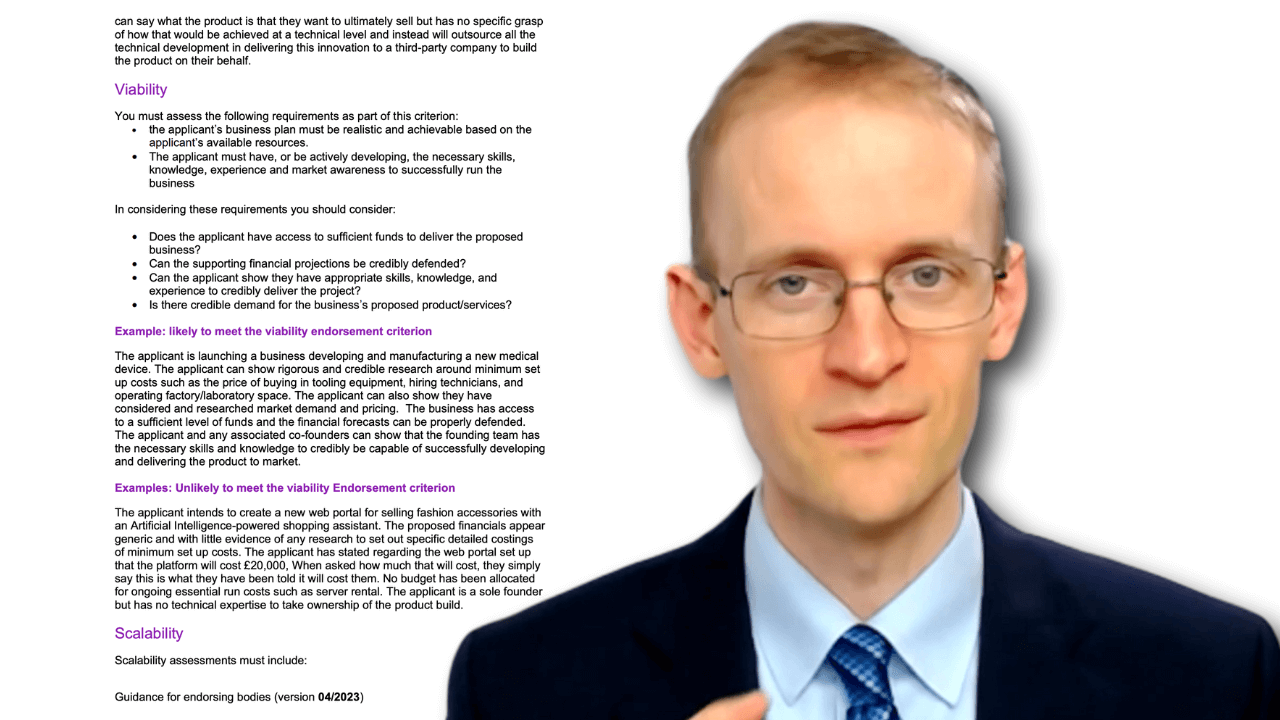In this video, I explore examples provided by the Home Office on whether your business would qualify under the innovator founder route.
The Home Office guidance says:
Example: likely to meet the viability endorsement criterion:
The applicant is launching a business developing and manufacturing a new medical device. The applicant can show rigorous and credible research around minimum set up costs such as the price of buying in tooling equipment, hiring technicians, and operating factory/laboratory space. The applicant can also show they have considered and researched market demand and pricing. The business has access to a sufficient level of funds and the financial forecasts can be properly defended. The applicant and any associated co-founders can show that the founding team has the necessary skills and knowledge to credibly be capable of successfully developing and delivering the product to market.
Examples: Unlikely to meet the viability Endorsement criterion:
The applicant intends to create a new web portal for selling fashion accessories with an Artificial Intelligence-powered shopping assistant. The proposed financials appear generic and with little evidence of any research to set out specific detailed costings of minimum set up costs. The applicant has stated regarding the web portal set up that the platform will cost £20,000, When asked how much that will cost, they simply say this is what they have been told it will cost them. No budget has been allocated for ongoing essential run costs such as server rental. The applicant is a sole founder but has no technical expertise to take ownership of the product build.

